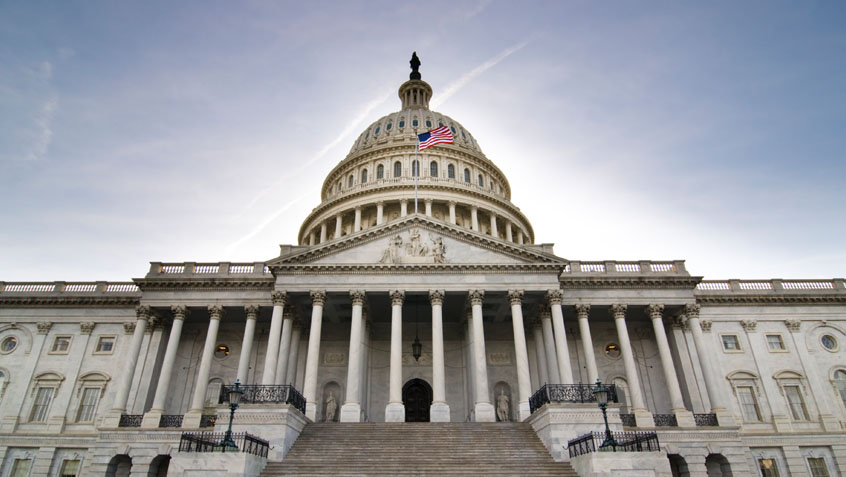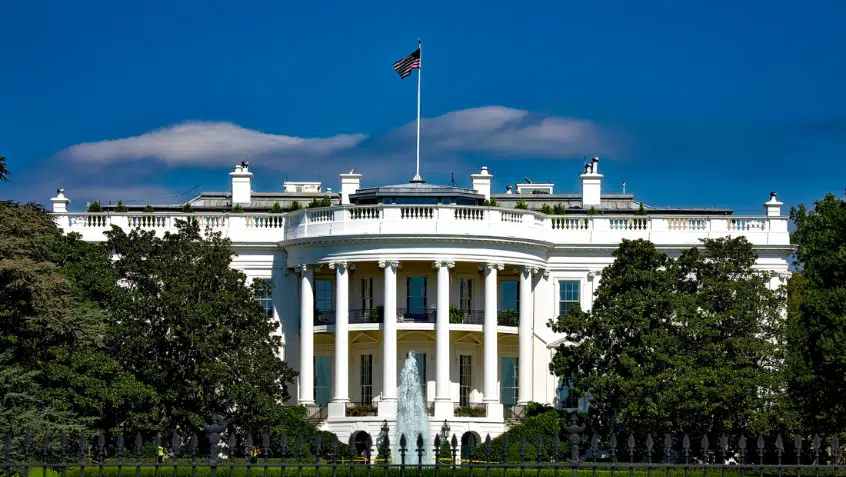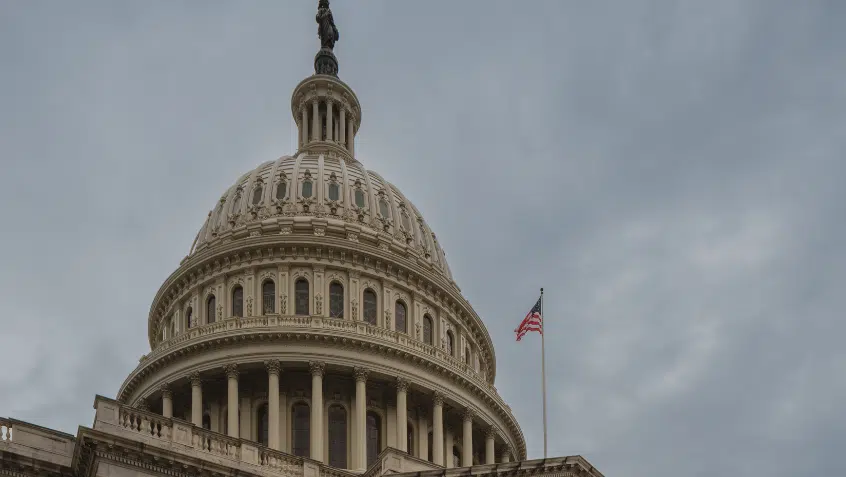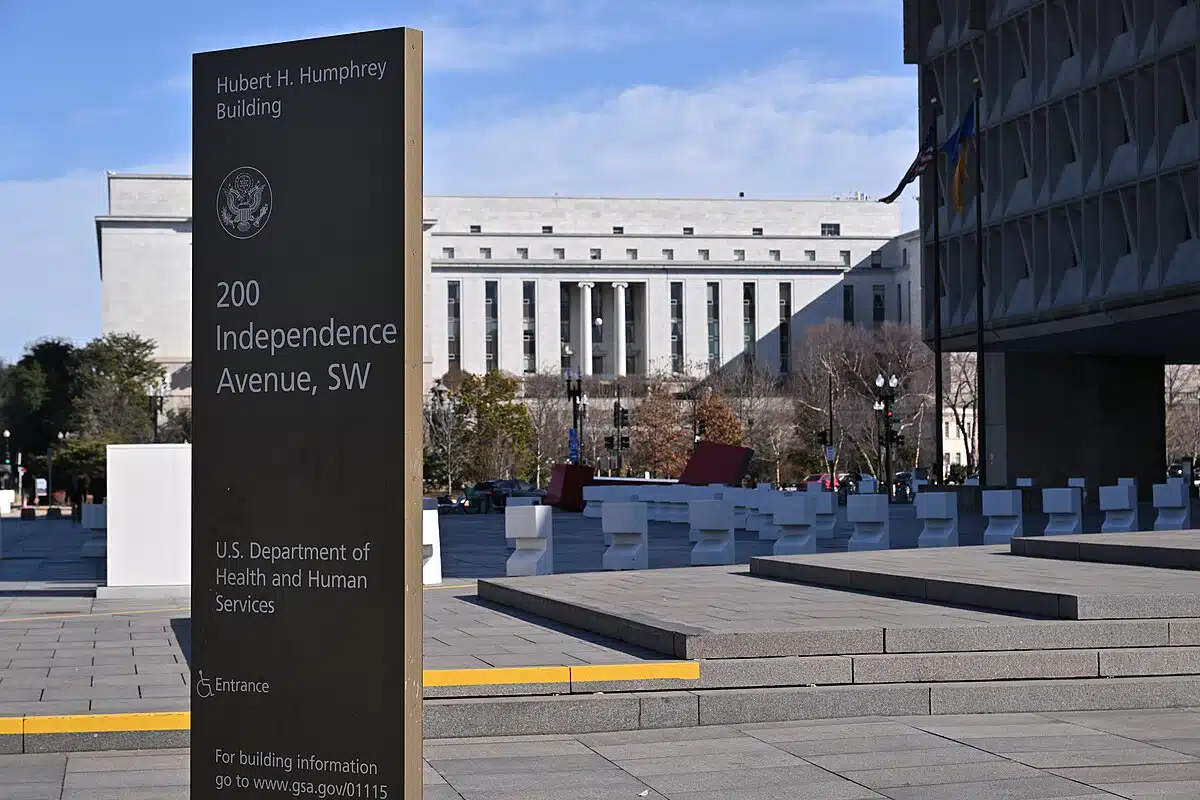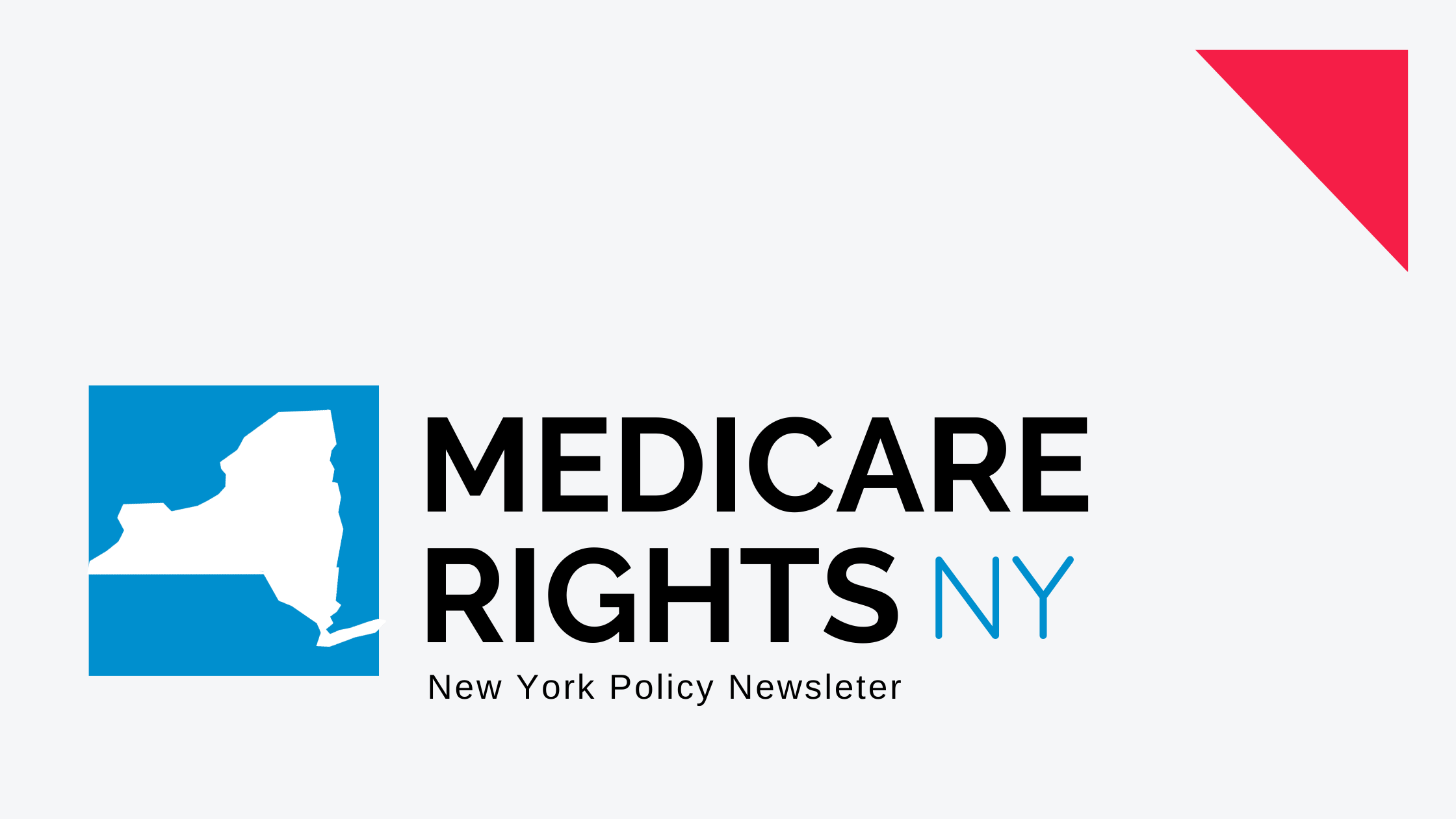
Medicare Rights Advocacy
Medicare Rights advocates for expansion of Medicaid eligibility and the Medicare Savings Program
Medicare Rights, in coalition with Medicaid Matters New York, Community Service Society of New York, Legal Aid Society, New York Legal Assistance Group, and StateWide Senior Action Council have put forward a proposal to expand Medicaid eligibility for people 65 and older and people with disabilities. The proposal also recommends expanding the income limits for Medicare Savings Programs (MSPs) to better serve the older adults living near-poverty in New York. Over 50 organizations have signed on in support of the proposal. Organizations that would like to endorse the proposal can use this link to access to sign-on letter.
In the coming days, Medicare Rights will be releasing a report with recommendations to improve the Medicare Savings Program in New York based on experiences during the public health emergency.
Medicare Rights President Fred Riccardi appointed to Medicaid advisory panel
Medicare Rights Center’s President Fred Riccardi was recently appointed to the New York State Medicaid Managed Care Advisory Review Panel. This advisory panel is charged with monitoring managed care provider participation, assessing the impact of marketing and enrollment strategies, and examining trends in access and utilization for people enrolled in Medicaid managed care.
Over 800,000 New Yorkers are dually eligible for Medicare and Medicaid. Members of this population often have chronic conditions and require costly health care services. The duals population is also often targeted by policymakers interested in creating savings for the state. As the state pursues strategies to dramatically increase enrollment in Medicaid managed care, it is necessary to put the needs of dually eligible individuals first. Medicare Rights hopes to work to strengthen consumer protections and ensure access to needed care and programs for this population.
New resource provides information on avoiding Medicare medical debt
Medicare Rights and Health Care For All New York (HCFANY) have released a new flier related to resolving medical debt for Medicare beneficiaries. The flier explains how individuals with Medicare may incur medical debts and common services that often have high costs. It also explains how Medicare beneficiaries can avoid medical debt by using free or reduced-cost clinics, government-funded health centers, and charity care.
Included with the flier is information about HCFANY’s New York-specific advocacy to tackle medical debt and help uninsured individuals during the pandemic. To learn more about these proposals, please visit HCFANY’s blog.
New CMS Compare tool has implications for NYHealthcare Compare
In September 2020, the Centers for Medicare & Medicaid Services (CMS) launched Care Compare, a redesign of their previous health care compare sites on Medicare.gov. Care Compare allows Medicare beneficiaries to compare doctors and clinicians, hospitals, nursing homes, and more. New York announced a similar project in 2020, aimed at increasing health care transparency.
CMS’s redesign can offer direction to the future of New York’s NYHealthcare Compare project. Specifically, New York should consider including:
- Consistent and comprehensive quality measures to facilitate fair comparisons across health care providers. These measures should be clearly defined so that consumers understand how quality is assessed.
- Streamlined information that is relevant and comprehensible to consumers, such as the insurance plans that a provider accepts.
- Information on how to access financial assistance programs.
- A portal for consumer feedback and comments to inform updates to the site.
For more information, please visit HCFANY’s blog.
New York State and Federal Government Updates
Fall Open Enrollment 2021
Fall Open Enrollment occurs each year from October 15 through December 7. During this time, beneficiaries can join a new Medicare Advantage Plan or stand-alone prescription drug (Part D) plan, or switch between Original Medicare (with or without a Part D plan) and Medicare Advantage. Any changes made during Fall Open Enrollment take effect January 1.
During Fall Open Enrollment, beneficiaries should review their current health and drug coverage, regardless of whether or not they are satisfied with their current coverage, because much can change from year to year. Unfortunately, as recently reported by the Kaiser Family Foundation, more than half of beneficiaries do not review their coverage annually, which can lead to unexpected costs and other problems.
Beneficiaries with Original Medicare should read their 2022 Medicare & You handbook to know about Medicare costs and benefits for the upcoming year. Beneficiaries enrolled in a Medicare Advantage Plan or Part D plan should receive an Annual Notice of Change (ANOC) or Evidence of Coverage (EOC) from their plan. These notices detail any changes in the plan’s costs, benefits, and rules for the upcoming year. Even if a beneficiary has had no issue with their plan in the past year, keep an eye out for these letters to be aware of how the plan might change in the coming year.
Beneficiaries with Extra Help should also be aware that they will use Fall Open Enrollment if they want to make any coverage changes between October 1 and December 31. Any changes made will take effect January 1. The Extra Help SEP is only for the first three calendar quarters of the year, though beneficiaries interested in Extra Help or other low-income programs can apply at any time, including during Fall Open Enrollment.
To help beneficiaries and professionals navigate Fall Open Enrollment, Medicare Rights has released a new Fall Open Enrollment guide. Medicare Rights also hosted a webinar on Fall Open Enrollment and Medicare Reminders.
Sign up for the webinar recording.
Medicare Advantage Plans now available to ESRD Medicare beneficiaries
Beginning in 2021, people with End-Stage Renal Disease (ESRD) can enroll in Medicare Advantage Plans. Medicare Advantage Plans must cover the same services as Original Medicare but may have different costs and restrictions. However, Medicare Advantage Plans cannot set cost-sharing for either outpatient dialysis or immunosuppressant drugs higher than the beneficiary responsibility would be under Original Medicare.
ESRD Medicare beneficiaries interested in enrolling in a Medicare Advantage Plan for 2021 can do so during Fall Open Enrollment. It is important that beneficiaries consider provider networks and costs as they evaluate plans.
For more information on Medicare Advantage for ESRD Medicare beneficiaries, visit Medicare Interactive.
The Latest
Most Read
Congress Moves to Cut Medicaid
Threats to the Social Security Administration and to Benefits Continue to Raise Alarm
House Adopts Senate Budget Plan, Laying the Groundwork for Significant Health Care Cuts
Trump Administration and DOGE Eliminate Staff Who Help Older Adults and People With Disabilities
Add Medicare to Your Inbox
Sign up to receive Medicare news, policy developments, and other useful updates from the Medicare Rights.
View this profile on InstagramMedicare Rights Center (@medicarerights) • Instagram photos and videos

